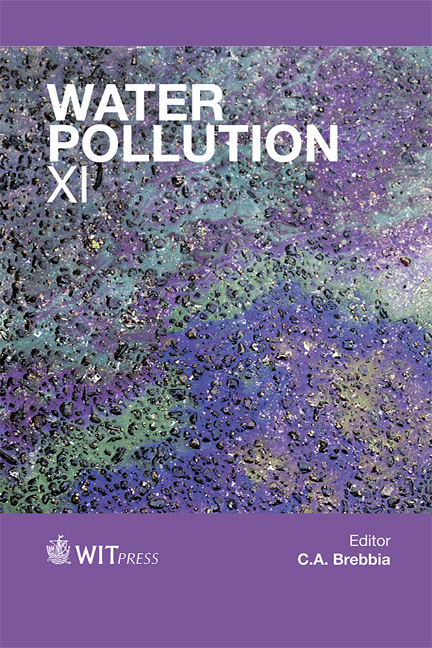Remediation Of Groundwater Polluted By Gasoline-derived Compounds With Biobarriers
Price
Free (open access)
Transaction
Volume
164
Pages
11
Page Range
439 - 449
Published
2012
Size
1209 kb
Paper DOI
10.2495/WP120381
Copyright
WIT Press
Author(s)
S. Saponaro, A. Careghini, L. Romele, E. Sezenna, A. Franzetti, I. Gandolfi, M. Daghio & G. Bestetti
Abstract
Biobarriers (BBs) are a new type of in situ technology for the remediation of contaminated groundwater. In this work results of laboratory experiments on a BB system are discussed. First, a proper filling material for BB applications was selected among four possible granular materials (perlite, pumice, expanded clay, activated carbon), based on the physical-chemical properties affecting the BB performance and the bacterial adhesion capacity. Based on the results, pumice was selected as the filling material for the second part of the work, during which a laboratory column test was carried out without inoculation. Physical-chemical parameters (temperature, dissolved oxygen concentration, pH and specific electric conductivity) and pollutant concentrations (BTEX, MTBE, tert-butyl alcohol, 1,2,4-trimetylbenzene, naphthalene) were measured in water samples collected from eight piezometers uniformly distributed along the column length. Molecular microbiological analyses were also carried out on pumice before and after the treatment to assess the differences in the bacterial community. Different decreasing trends in the pollutant concentration along the column were observed for the different groups of contaminants that found explanation in the distribution of the different microbial populations throughout the column. Keywords: groundwater remediation, biobarrier, monoaromatic solvents, methyl tert-butyl ether, gasoline-derived compounds.
Keywords
groundwater remediation, biobarrier, monoaromatic solvents, methyltert-butyl ether, gasoline-derived compounds





